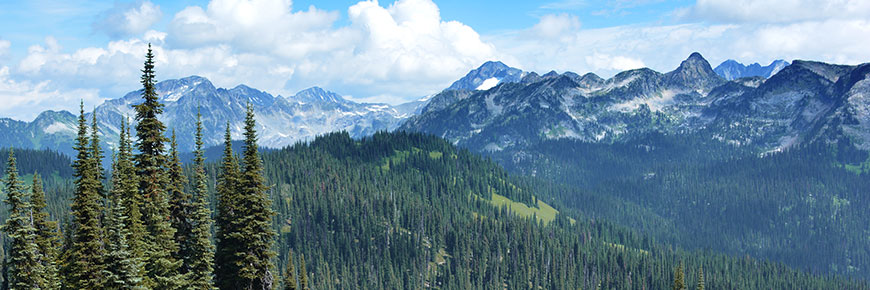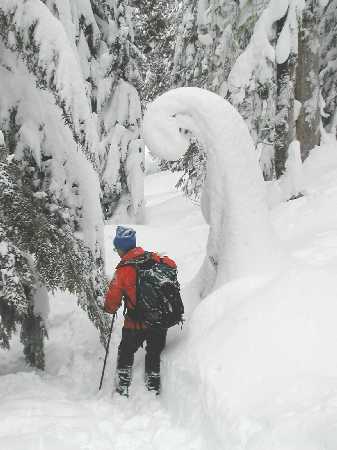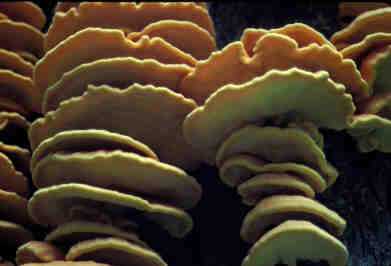
Weather and climate
Mount Revelstoke National Park
The weather of the Mount Revelstoke region develops as a result of warm moisture-laden air from the Pacific being deflected upwards by the Columbia Mountains. The cooling of this air mass brings significant precipitation to the Columbias, particularly during the winter months. The mean annual precipitation is 1278mm (50in) at Revelstoke, 1995mm (79in) in the subalpine zone.
The variations in daily weather reflect the large variations in regional topography throughout the Columbia Mountains. For example, it may be raining hard in one valley, while the adjacent valley may be under sunny skies. Weather forecasting, therefore, tends to be unreliable except when air masses are large and stable, which is a rare occurrence in this region of British Columbia.
The park receives regular regional weather reports, including fire weather and lightning forecasts, direct via electronic mail from the Environment Canada facilities in Kelowna, B.C. A daily weather report and prediction for Revelstoke is available from Environment Canada.
The following table outlines what to expect from our climate throughout the year. This is an average. The time of snowmelt or wildflower blooming can vary each year, by as much as several weeks!

The abundant wet snow typical of the Columbia Mountains often creates snow mushrooms and snow "madonnas" like this one.
© Parks Canada / Michael Morris
| January | Typically the snowiest month. Daily temperatures are below freezing at all elevations; mild Pacific air can produce rain showers; valley cloud obscures the sun at low elevations. |
|---|---|
| February | Winter conditions prevail. Temperatures are slightly milder. |
| March | Warmer temperatures bring more sleet and rain. At the summit, snow has accumulated to depths of five metres or more. |
| April | Frequent sunny days and rising temperatures. Snow begins to disappear from the city of Revelstoke and the base of Mount Revelstoke. |
| May | Temperatures are above freezing at all elevations. Rain is now the dominant precipitation and there is lots of sunshine. By the end of May the snow has usually disappeared from the lower half of Mount Revelstoke. |
| June | June is wetter than May and rainfall often increases. The earliest the Meadows-in-the-Sky Parkway has been snowfree is at the end of June. |
| July | Full summer prevails at the valley bottoms, in contrast to snowfields that usually still linger on the summit of Mount Revelstoke. Mid-July is the average for the Meadows-in-the-Sky Parkway to be snowfree and to open to vehicle traffic. At the edges of the melting snow on the summit, pasqueflowers, marsh marigolds, glacier lilies and buttercups bloom. |
| August | The latest date for the opening of the Meadows-in-the-Sky Parkway is during the first week of August! In most years however, snow is gone from the summit and the hiking season well underway. The Eva Lake Pilgrimage takes place in August. Timing for wildflower displays varies from year to year. On average the second week of the month is the best time to see the park's spectacular displays of subalpine wildflowers. August is the driest month of the year, on average. |
| September | Nights are cooler. There is greater likelihood of rain and, usually, snow on the summit of Mount Revelstoke. |
| October | Snow increases at higher elevations. By the end of the month, snow has come to stay in the high country. |
| November | Snow falls at all elevations. Avalanches may become active along the Trans Canada Highway. |
| December | Heavy snow accumulations and storms mark December. |

Fungi such as this sulphur polypore fruit profusely in the fall.
© Parks Canada / Pat Dunn
- Date modified :